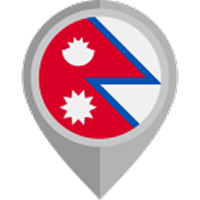Nepal vision | 15/08/2024
The classical trek through cultural heritages and natural wonders, taking you to the ultimate Mt. Everest, is the Everest Base Camp Trek. This incredible adventure is a dream for many people who want to reach and experience the charm of the world's highest peak.
Some people want to experience the allure of this journey alone, but that might not be possible. In 2024, the government of Nepal made it mandatory to hire a guide for any trekking journey.
In the meantime, the Everest Base Camp Trek trail is moderately challenging for beginners, so the guide can be your partner throughout the trek. In this article, we will understand the importance of a guide for your next trip to the Everest Base Camp Trek.
How Difficult is the Everest Base Camp Trek?
The journey of the Everest Base Camp trek is considered moderately challenging. The rocky, steep ascents and descents, as well as the well-maintained paths, are not the main challenge.
The major difficulty of the trail is the high elevation. During your trek, you will reach Everest Base Camp at 5,360 meters. When you ascend to such high altitudes, you have a chance to get altitude sickness.In severe cases, altitude sickness can lead to HAPE (High-Altitude Pulmonary Edema) or HACE (High-Altitude Cerebral Edema.
The second challenge is the weather at higher elevations, which can become harsh. However, during the best seasons, like spring and autumn, the weather is more stable, even in the higher altitude areas.Despite these difficulties, can a beginner do the trek or not?

Can a normal person hike to Everest Base Camp?
Yes, the normal person can hike to the Everest Base Camp. The well-established terrain features lush forests, rocky paths, and sections of glaciers, all of which are easily navigable.
But, these higher elevations can lead to altitude sickness, with symptoms such as nausea, vomiting, and shortness of breath being common. You should carry medicine like Diaxomine to deal with the situation and maintain the pace. Although in serious conditions, it's essential to seek medical advice.
We acclimatize in Namche Bazaar to help you adjust to the high elevation. Acclimatization is one of the best ways to prevent altitude sickness.
A person of average fitness can complete the Everest Base Camp trek, maintaining a steady pace, giving importance to acclimatization, staying physically fit, and being well hydrated.
Benefits of hiring a guide
Even a normal person can visit the Everest Base Camp Trek. But the trail in the lap of the Himalayas is sometimes hard to understand if you do not have any knowledge about the region. Besides, you might not know the local culture and customs and miss the chance to experience the cultural charm of the region.
In such cases, a guide can be a great support for your journey. The professionally trained guide has the expertise to help you throughout the journey. In addition, they also provide information about the local customs and culture that gives you the perspective of the people living in the remote region
Apart from this, there are several other benefits to hiring a guide during your Everest base camp trek
- Guides provide valuable knowledge about the terrain, culture, and history for an alluring trekking experience.
- Guides can be your friend to manage risks like altitude sickness and navigate change trails. They help to make sure your safety is their top priority.
- Guides bridge communication gaps with locals, making your interactions smoother. The fun part is that you can just join your hands and say namaste even if you don't understand their language. It is a way to greet people in Nepal.
- They handle permits, accommodation, and route planning so that you have a hassle free experience to plan and organize the trek.
Tips for choosing a better guide
Now, you might want to consider something before you hire a guide for your trek. While there are some independent guides. But for a better, safer, and more amazing experience of trekking, you should consult the registered trekking operators.
- You should check their credentials and also look for their reviews on Trip Advisor for a better evaluation of their quality of service.
- Check their experience level in the Everest, Annapurna Circuit Trek and other trekking routes and their success rate a well
- It is better if you go for a guide who has hold of several languages and a good personality for a better experience.
- Also, ensure the guide has the required training like first air and has a proper understanding of emergency situation
To wrap up ,It can be said that the marvelous experience of the Everest Base Camp Trek is a once-in-a-lifetime adventure. Along the journey, you'll be surrounded by stunning natural landscapes, cultural artifacts, and endangered wildlife, all of which define the essence of the Everest trek.
Despite this amazing beauty, the challenges will test your physical and mental endurance. Therefore, it’s essential to prepare accordingly, consult your guide, and work towards achieving your incredible goal of reaching Everest Base Camp.
If you’re in search of an experienced guide, feel free to contact Nepal Vision Treks. Our team of experienced and trained guides has been operating treks for over two decades. So, are you ready to create memories that will last a lifetime?
FAQS









